
The Gates of Hell is a monumental bronze sculptural group work by French artist Auguste Rodin that depicts a scene from the Inferno, the first section of Dante Alighieri's Divine Comedy. It stands at 6 metres high, 4 metres wide and 1 metre deep (19.7×13.1×3.3 ft) and contains 180 figures.
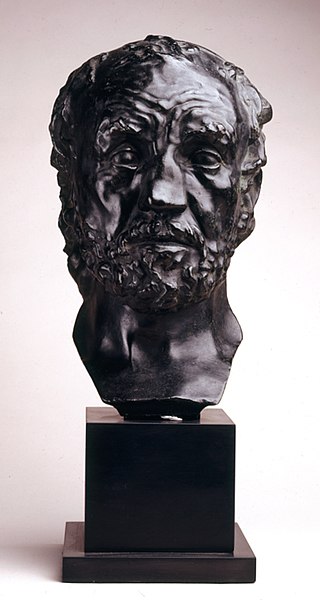
Man with the Broken Nose is a sculpture by Auguste Rodin created between 1863 and 1864 and approved by the Salon in 1875. It is considered the first by Rodin in which life is represented over the grace pervading the academic circles and aesthetic of the time.

The Falling Man is a sculpture by French artist Auguste Rodin modeled in 1882 and is part of Rodin's emblematic group The Gates of Hell.

I Am Beautiful, also known as The Abduction, is a sculpture of 1882 by the French artist Auguste Rodin, inspired in a fragment from Charles Baudelaire's collection of poems Les Fleurs du mal.

Fugitive Love is a sculpture by Auguste Rodin made between 1886 and 1887, both sculpted in marble and cast in bronze. It represents a man and a woman embracing each other on top of a rock. More specifically, the author was inspired by the story of Francesca da Rimini's love affair with Paolo Malatesta, an allusion to Dante Alighieri's depiction of lust on the second circle of Hell in his Inferno.

Pierre de Wissant is a bronze sculpture by French artist Auguste Rodin, part of his sculptural group The Burghers of Calais. This sculpture represents one of the six burghers who, according to Jean Froissart surrendered themselves in 1347, at the beginning of the Hundred Years' War (1337–1453), in order to save the inhabitants of the French city of Calais from the English laying siege to the city.
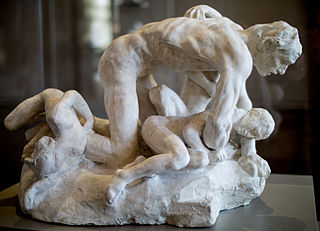
Ugolino and his sons is a plaster sculpture by French artist Auguste Rodin, part of the sculptural group known as The Gates of Hell. As an independent piece, it was exhibited by its author in Brussels (1887), Edinburgh (1893), Genoa (1896), Florence (1897), Netherlands (1899) and in his own retrospective in 1900.

Head of Saint John the Baptist is a marble sculpture by French artist Auguste Rodin, sculpted in 1887 as part of a series of sculptures based on his Saint John the Baptist, exhibited for the first time in 1880 with great acceptance and recognition from critics.
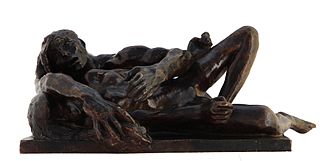
Avarice and Lust is a sculpture by French artist Auguste Rodin, conceived between 1885 and 1887, representing two of the seven capital sins and is part of his sculptural group The Gates of Hell, where it can be found in the lower part of the right door. It's possible that the name was inspired by Victor Hugo's poem Après une lecture du Dante:
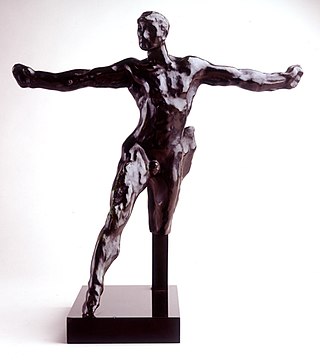
Standing Mercury is a bronze sculpture by French artist Auguste Rodin, first exhibited in 1888. Rodin depicts the mythological god Mercury, son of Maia and Jupiter—messenger of the gods and guide to the Underworld—as a young man, representing eloquence and reason. This depiction is opposite to the traditional representation of Hermes, its Greek counterpart, as a mature man.

The Athlete is a 1901-1904 black-patina bronze sculpture by the French artist Auguste Rodin It measures 39,4 × 27,5 × 24,3 cm.

The Old Tree is a plaster sculpture by the French artist Auguste Rodin, originally conceived as part of his The Gates of Hell project.

The Maiden Kissed by the Ghost is an 1880 sculpture by the French artist Auguste Rodin. It was first exhibited at his fourteenth exhibition, hosted by the National Society Salon. One of the marble versions of the work is now in the Museo Soumaya in Mexico City.

The Kneeling Man is a work originally conceived in 1888 by the French artist Auguste Rodin for his The Gates of Hell project.

Youth Triumphant is one of the sculptures created by Auguste Rodin as part of the planning for his The Gates of Hell. It was inspired by Jean Dampt's The Grandmother's Kiss, exhibited in 1893. That work shows a young woman resting in the arms of an old woman, with the pair deeply kissing.
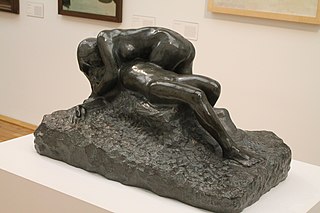
The Death of Adonis is a white marble sculpture. It was created by Auguste Rodin and signed “A RODIN” on the base. It shows Aphrodite mourning over the body of Adonis. The main version is in the Musée Rodin and another is in the Museo Soumaya.
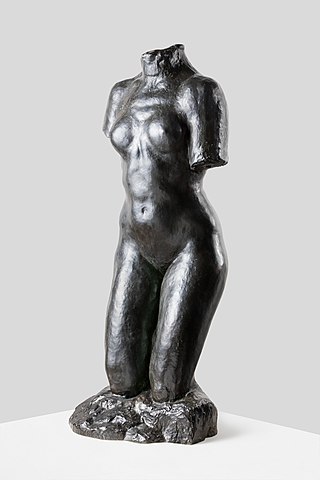
The Prayer is a 1909 sculpture by Auguste Rodin. As in his The Walking Man, he explores a fragment of a figure.

Damned Women is a sculpture created by Auguste Rodin between 1885 and 1890 as part of his The Gates of Hell project—it appears on the upper right as the counterpart to The Fallen Caryatid.

Polyphemus is an 1888 sculpture by Auguste Rodin, showing Polyphemus and his love for the Nereid Galatea, as told in Book XIII of Ovid's Metamorphoses.
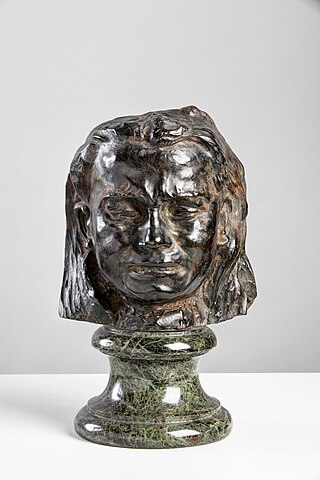
Mask of a Weeping Woman is a sculpture by Auguste Rodin, initially produced as a pair with Weeping Woman for the first version of his The Gates of Hell in 1885. The two pieces were intended to appear on the centre of each panel. They were later moved by Rodin himself, who instead placed Mask on the lower part of the left panel.





















